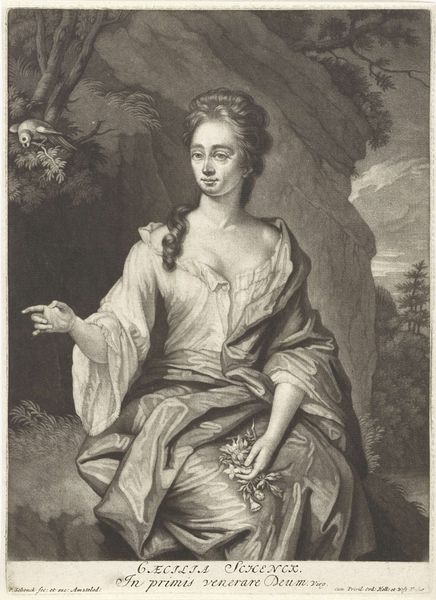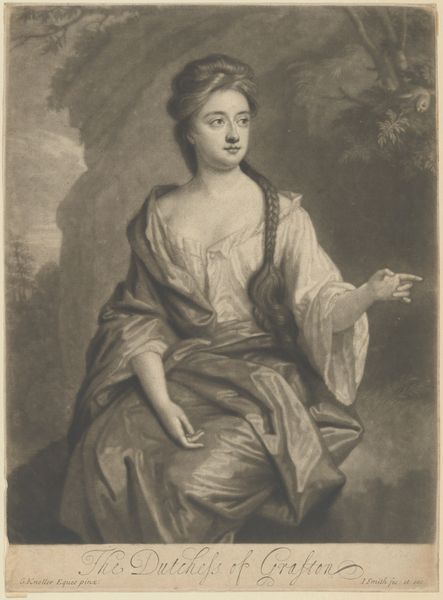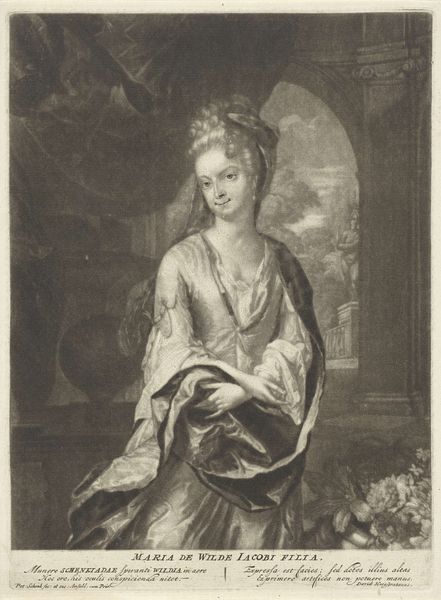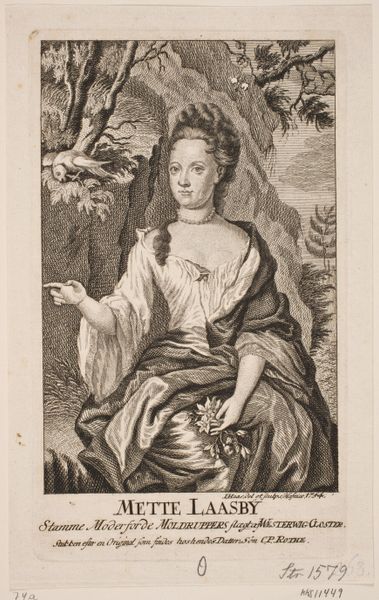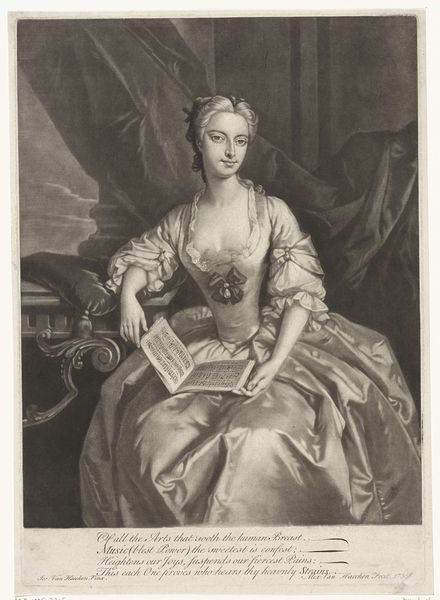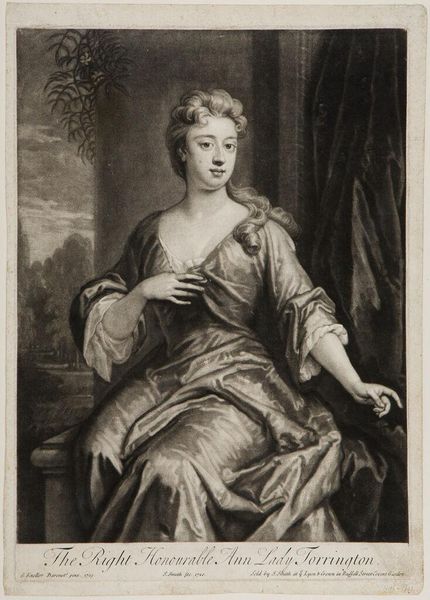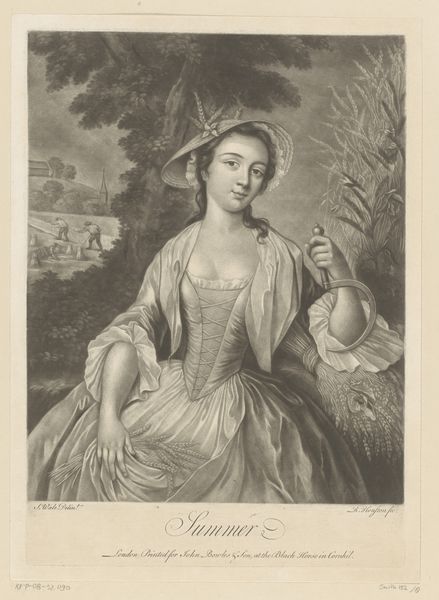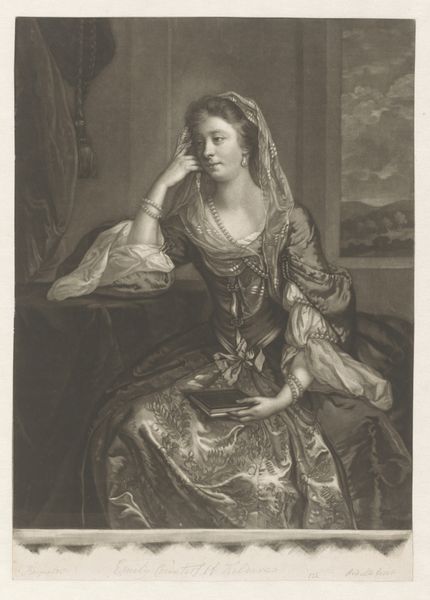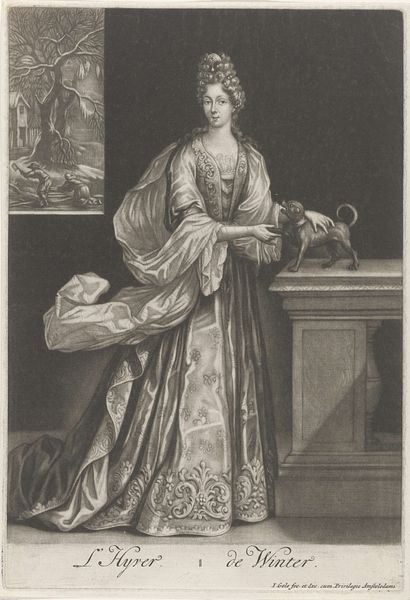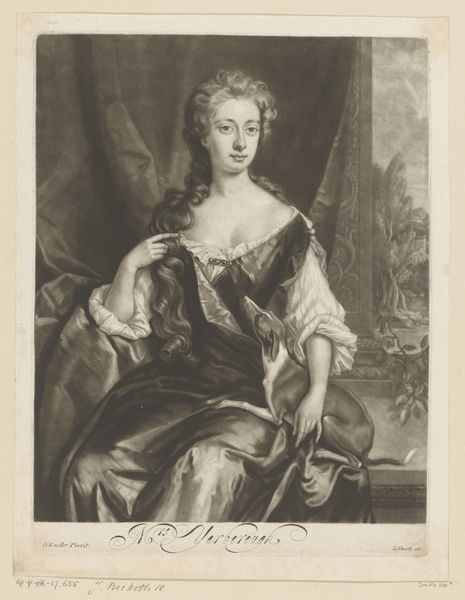
print, engraving
#
portrait
#
baroque
# print
#
old engraving style
#
pencil drawing
#
engraving
Dimensions: height 246 mm, width 177 mm
Copyright: Rijks Museum: Open Domain
Editor: So, here we have *Portret van Henriëtte Amalia van Anhalt-Dessau,* an engraving created sometime between 1683 and 1724 by Jacob Gole. It's striking how the texture of the dress seems almost photographic, despite being a print. What can you tell me about this portrait? Curator: Well, let’s consider the means of production here. This isn't just about depicting nobility; it's about disseminating that image. Engravings allowed for reproduction on a scale previously unimaginable, democratizing access, though perhaps not perfectly, to elite imagery. Note the materials, the paper and ink; the very labor involved in creating and distributing these prints reflects a burgeoning market and a changing social structure. Editor: That’s an interesting way to look at it. So, it's not just art, but almost a form of early media? Did the choice of engraving affect the kind of portrait that was made? Curator: Precisely! Engraving demands a particular skill set, a specialized form of labor. The artist's choices – line, shadow, detail – are all dictated by the possibilities and limitations of the medium. Consider how the artist emulates texture with only lines. It prompts the question: How does a traditionally reproductive medium challenge notions of originality? Also, what kind of consumer or societal desires would allow such forms to flourish? Editor: I hadn't thought about it like that before. So it's not just a portrait, it’s evidence of a complex interaction between technology, labor, and social class. It gives a whole new meaning to the concept of art. Curator: Exactly. By examining the "how" – the materiality and production – we can gain a richer understanding of the “why”. It is not just the what and the who that dictates the meaning, but how it reaches an audience. Editor: That gives me a lot to think about when viewing art going forward. Thank you!
Comments
No comments
Be the first to comment and join the conversation on the ultimate creative platform.
